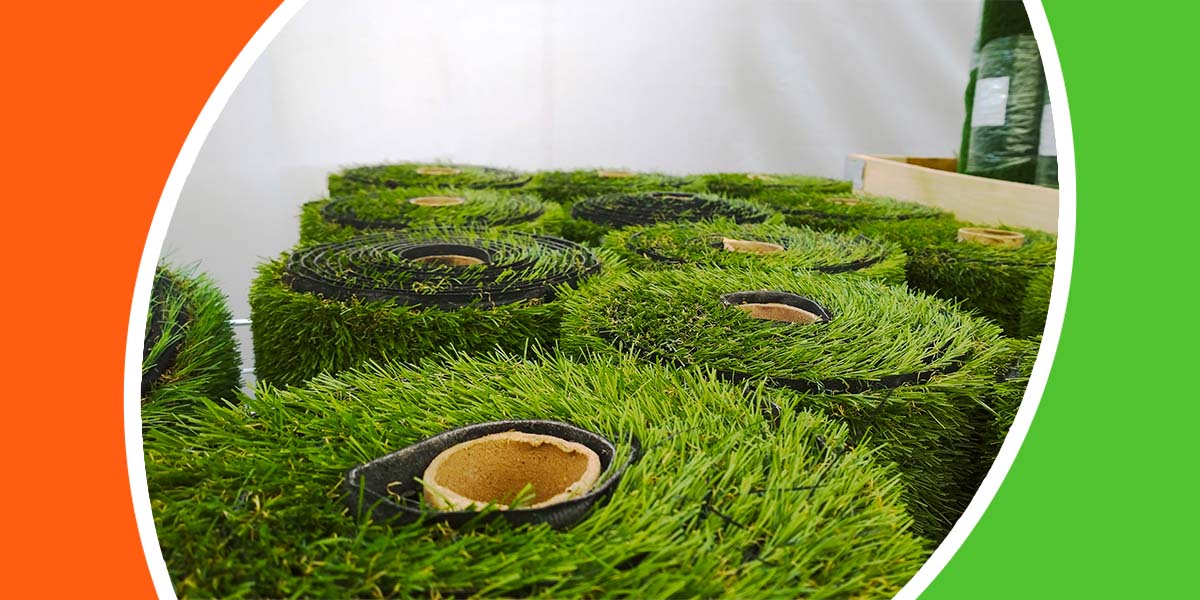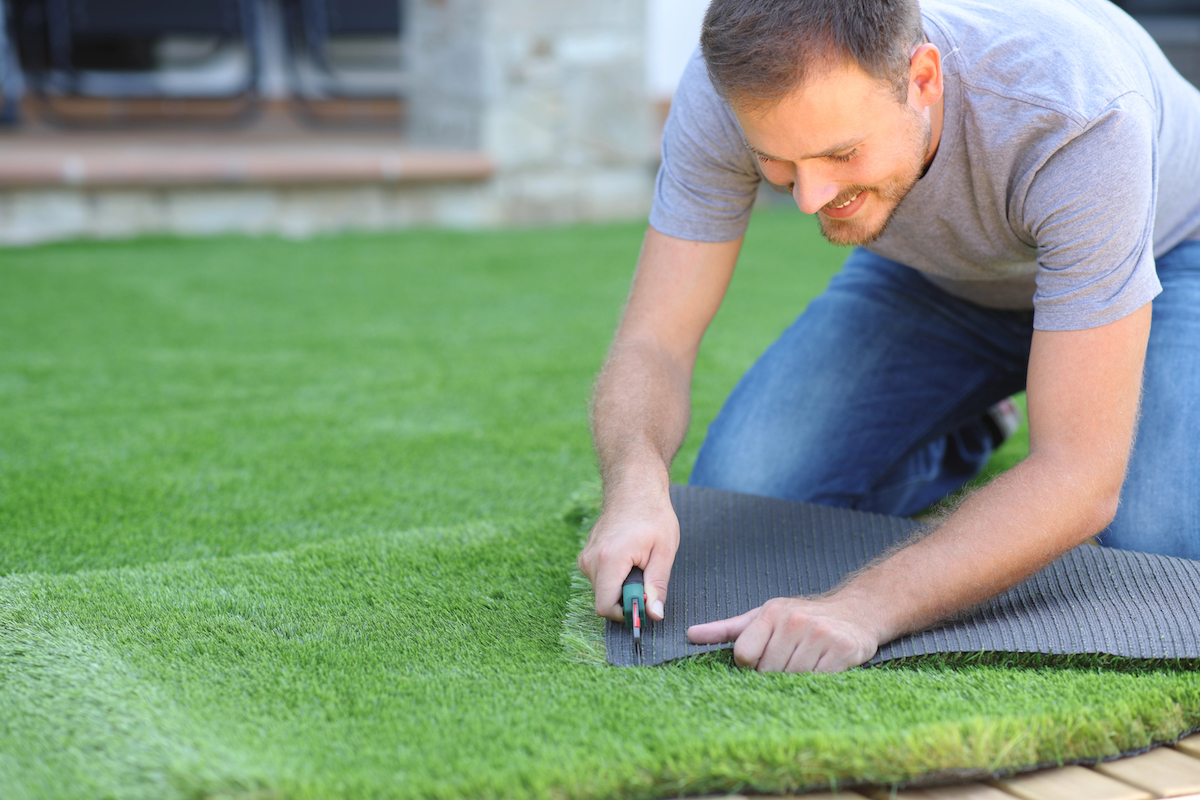Upgrade Your Outdoor Space with Arizona Artificial Turf for a Lush Green Look
Upgrade Your Outdoor Space with Arizona Artificial Turf for a Lush Green Look
Blog Article
See Why Homeowners Prefer Synthetic Grass for Sustainable Landscape Design Practices
As property owners significantly focus on sustainability in landscaping, man-made lawn has emerged as a compelling option to conventional grass. What remains to be explored is the full scope of advantages that fabricated grass can provide to property owners and the setting alike.
Water Preservation Conveniences
Among the most considerable benefits of artificial lawn is its function in water preservation. Standard turf lawns need significant amounts of water to keep their lavish look, commonly leading to overuse of regional water resources, specifically in dry regions. In comparison, synthetic grass eliminates this demand entirely, as it does not require watering. This not just conserves water but likewise minimizes the pressure on local water systems, specifically during dry spell problems.
Additionally, the setup of synthetic grass can contribute to a more lasting landscape. Property owners can substantially lower their water expenses, allowing for reallocation of sources to various other environmental campaigns or house usages. In addition, synthetic grass is designed to stand up to various climatic conditions without the need for extra watering, making it a perfect choice for regions dealing with water shortage.
The ecological advantages extend past immediate water savings. By decreasing water consumption, synthetic grass helps to mitigate the influences of environment modification, protecting vital ecological communities that are intimidated by excessive water extraction. As lasting landscaping methods gain grip, synthetic grass arises as an accountable option for house owners seeking to produce eco-friendly outdoor rooms.
Decreased Upkeep Efforts
Man-made lawn substantially minimizes upkeep efforts compared to conventional yard lawns. With artificial yard, home owners can get rid of the time-consuming tasks connected with all-natural landscape design, such as mowing, fertilizing, and weeding. This not just saves useful time yet likewise minimizes physical labor, making yard treatment easily accessible for individuals of any ages.
Among one of the most remarkable benefits is the lack of regular mowing. Standard grass need constant trimming to preserve an aesthetically pleasing elevation, whereas fabricated turf remains consistently lush without the requirement for reducing. In addition, property owners no more need to apply fertilizers or chemicals, which are usually needed to keep natural yard healthy and balanced. This change not just lightens the workload yet also advertises a neater, a lot more uniform appearance year-round.
Furthermore, synthetic grass is long lasting and durable, requiring marginal upkeep beyond occasional brushing and rinsing to get rid of particles. This ease of upkeep allows homeowners to enjoy their exterior areas without the continuous fear of upkeep, offering even more time for leisure and household activities. Inevitably, the minimized upkeep initiatives connected with synthetic grass make it an appealing option for those looking for a low-maintenance, visually appealing landscape.

Environmental Impact Decrease
There is a growing recognition of the environmental benefits connected with man-made grass, particularly in terms of water conservation and lowered chemical usage. Standard grass need substantial amounts of water, particularly in drought-prone regions, causing boosted pressure on neighborhood water resources. In contrast, synthetic grass gets rid of the requirement for irrigation, significantly lowering water consumption and promoting sustainability.
Additionally, standard yard upkeep often involves the application of fertilizers, chemicals, and herbicides, which can contribute to soil and water air pollution. Fabricated turf mitigates this ecological hazard by calling for minimal maintenance and basically eliminating the requirement for hazardous chemicals. This not just enhances soil health and wellness but also secures regional environments from toxic overflow.
Additionally, the manufacturing of all-natural lawn lawns usually involves the use of fossil gas for cutting and landscape design tools, further adding to greenhouse gas exhausts. By choosing synthetic grass, home owners can considerably decrease their carbon impact related to lawn care tasks.
Aesthetic Appeal and Versatility
Along with its ecological advantages, synthetic grass uses significant visual charm and versatility for landscaping. Property owners can attain a rich, eco-friendly look year-round, getting rid of the seasonal variations typically connected with natural turf. This constant visual not only enhances the aesthetic charm of a residential property but likewise contributes to a properly maintained and sleek appearance.
In addition, artificial turf is offered in a variety of textures, designs, and shades, permitting personalization to fit individual preferences and layout themes - Artificial turf companies phoenix. Whether used in residential yards, business areas, or recreational areas, it can effortlessly incorporate into diverse landscaping designs, from modern-day minimalist to lush tropical settings
The convenience of man-made grass expands beyond mere appearance; it can be official website installed in various areas, including rooftops, patios, and also indoor spaces, producing possibilities for one-of-a-kind landscape design services. Additionally, it appropriates for a variety of tasks, from children's backyard to pet-friendly atmospheres, providing capability without endangering style.
Inevitably, the visual allure and adaptability of synthetic grass make it an appealing option for house owners looking for lasting landscape design remedies that do not give up beauty for environmental responsibility.

Long-Term Price Savings
One of the most compelling advantages of artificial grass is go to my site its potential for lasting cost savings. Unlike all-natural turf, which requires normal maintenance-- including mowing, watering, feeding, and insect control-- artificial grass significantly lowers these continuous costs.
In addition, man-made lawn has a life expectancy of 15 to 25 years, depending on its high quality and use. This resilience decreases replacement costs, making it a much more economical selection over time. Additionally, the preliminary financial investment in fabricated lawn can typically be redeemed via the financial savings accumulated with time.
While the ahead of time cost may appear greater compared to sod setup, the cumulative financial savings from reduced upkeep and water usage often surpass these first expenses. Inevitably, the fostering of fabricated lawn not only promotes a lasting landscaping solution however also supplies home owners an economically savvy choice that aligns with long-lasting budgeting goals.
Verdict
Fabricated grass arises as an engaging choice for lasting landscaping, offering substantial advantages in water conservation, lowered upkeep efforts, and lessened environmental effect. Its visual charm and convenience enhance the aesthetic landscape while lining up with modern sustainability goals. Furthermore, lasting price financial savings add to its good looks for home owners. As areas progressively prioritize eco-friendly practices, the fostering of synthetic grass stands for a dynamic step towards accomplishing durable and sustainable landscapes.
Additionally, man-made turf is developed to endure numerous climatic conditions without the demand for supplemental watering, making it a perfect choice for regions encountering water shortage. (Phoenix turf companies)

Synthetic lawn emerges as an engaging alternative for sustainable landscape design, offering substantial benefits in water conservation, decreased maintenance initiatives, and diminished ecological effect.
Report this page